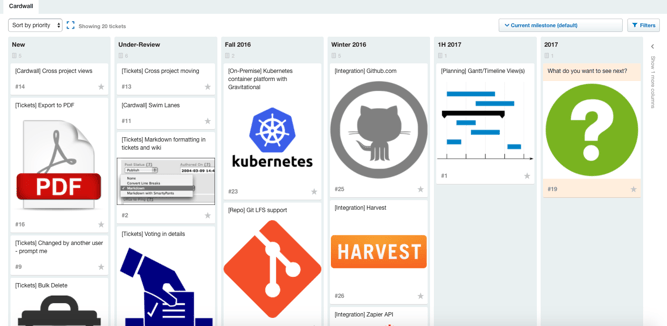Telling a Client You Are Late Again
4 Tips To Prevent and Manage Clients From Delaying Their Own Project
Managing the launch of software, mobile apps or games tin can exist both an fine art and a science. Project owners of software development projects often need to balance both the needs of the client and the bandwidth of their squad to create timelines and help everyone stick to them. But timeline projections are rarely 100% authentic as dozens of moving pieces need to fall into place in order for a project to remain on schedule. While many clients empathize this, even the best ones are decumbent to introducing scope creep. From changes in project direction or specifications to not sharing vital resource or providing timely feedback, even the smallest deviation from clients can lead to major project delays. When this happens, it's costly for both agencies and businesses. While some clients understand this, others may be unaware and the onus falls on yous, the project owner, to communicate the problem. However, breaking it to a client that they're property upwards the project can feel like navigating a minefield. While on 1 hand, if the projection is never-ending yous won't get paid for your services, on the other hand you want to avoid putting whatever strain on the client relationship. Here are 4 tips on how to communicate with clients that they're the reason a project has been delayed: The way you design your timeline at the offset of a project can help yous avoid complications downwards the road. One style to practice this is by edifice buffers around deadlines to give you and the client flexibility in the example that progress is interrupted. Your client may be dealing with indecisive stakeholders on their end, urgent situations that flare upwards or even personal matters. Creating a timeline that has some flexibility is a way you can plan for this possibility. You lot tin can use tools like Assembla to illustrate timelines and status of projects. Here's a snapshot of Assembla'southward product roadmap that illustrates features and due dates: Another fashion that you can design your timeline for flexibility is past giving clients a set window of fourth dimension to fulfill next steps, rather than a firm deadline. For example, after delivering an initial wireframe, tell the client that you'll need approval within a 7 day period and create calendar reminders that alerts each stakeholder when their feedback is needed. This mode they accept fourth dimension to make certain every stakeholder has the opportunity to counterbalance in. Any yous do, don't procrastinate. Considering projects are often and so fast-moving, it's of import to have care of potential challenges early. Every bit ane example, here's what Sean Butler, director of legal at Cisco, recommends for getting over i major hurdle—compliance. Despite edifice flexibility into your timeline and giving clients plenty of time to submit feedback, projects may nevertheless run off course. If y'all start to anticipate that the project will be delayed, it'due south better to inform the client sooner rather than later. While information technology'southward natural to desire to present an optimistic forepart to clients, they hired you for your experience and you'll earn more credibility by being candid upfront. This also gives clients the ability to make the decisions that will steer their project in the correct direction. One manner to exercise this is by submitting weekly or even daily project updates. In your email, brand sure to identify what you need from them to progress the project also as continue them in the loop as you lot arrange the timeline based on the delay. If yous're using the Assembla app, you can quickly @ mention users in tickets to let someone know almost specifics of a task. Many times, clients just want to know that activities are occurring. Consider chat communication in improver to email. You tin can easily create a new Slack channel for certain projects. I piece of work with an agency on some projects and we communicate daily via Slack. This is helpful when they take a quick question for me on requirements that I can quickly answer instead of waiting on an email to exist read and answered. Here's a resource from HBR that offers tips for treatment these hard conversations. Before you can bring a solution to your client, you'll need to understand what's causing the holdup on their finish. First, examine your communications with the client carefully and look to see if there is annihilation you could have washed differently. Was there a miscommunication? Take responsibility for anything yous could have done differently, even if it was pocket-size. This tin assist both you and your client communicate better moving forrard. If most of the delays came from the customer, see if you can empathise the root cause. Did they have too long to share important resources and submit feedback or was in that location a modify in management that derailed the project? Your client may also be dealing with internal pressures that have slowed the project downwards. If y'all don't know what's causing the delay, take a candid chat with your customer and ask them what yous tin exercise to assistance expedite the process. When communicating with clients almost the filibuster, acknowledging the cause of filibuster and empathizing with the client will help yous secure their trust and find a solution. One methodology that development teams may find helpful is the '5 Whys,' which offers a constructive, q&a based path to identifying the source of a trouble. Here's the exact process that Buffer uses. When clients are the cause of a projection delay, they will peculiarly value an agency that can help them sort out a solution. At present that you've identified the cause of the delays, give clients three different options to choose from to get the project back on rails. They can be: Providing 3 options with clear outcomes can help reduce time spent on trying to come up to a solution. It's of import to remember that keeping circuitous timelines on schedule is a balancing act which is why building in some buffers and empathizing with the client is key to maintaining a positive human relationship. If the delays were on your end, you'd desire the same benefit of the doubt. Of form, information technology'south not always easy to communicate these issues, especially when at that place is a lot of pressure, which is why these best practices can come in handy should yous need to let a client know that they're property up productivity. Here are some suggestions for talking near less-than-perfect solutions from Kathryn Kuhn, managing director of agility services at Rally Software. Share your thoughts in the comments section below. How can you say no more constructively to better collaboration? Share your thoughts in the comments section beneath. 
1. Outset with flexibility in your timeline.

2. There's no such thing equally over communication.

Include links to documents that testify project details and arrive easy for them to provide feedback. You can use tools like Google Form, for instance, where questions are clearly outlined with respective comment boxes and then stakeholders tin can chop-chop and hands provide feedback. 3. Identify and document the source of delay.
4. Nowadays potential solutions.
Accept a artistic technique to endeavour?
Source: https://blog.assembla.com/when-your-clients-are-delaying-their-own-project

0 Response to "Telling a Client You Are Late Again"
Post a Comment